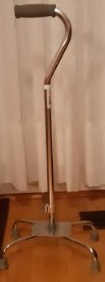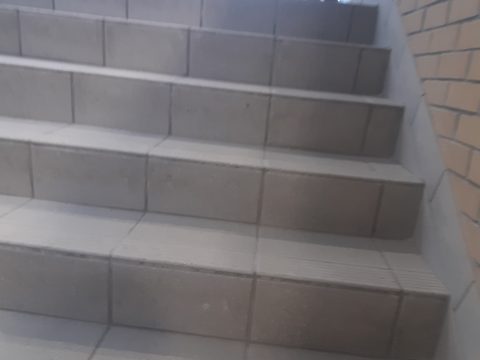
As a stroke carer, is your loved one or the client recovering from a stroke in need of a walking stick?
Finding a perfect walking stick for some stroke patients is essential to regain walking ability.
Walking sticks (canes) benefit some stroke patients in many ways.
This post will help to gain a deeper understanding of the role of walking sticks for stroke patients. You will find some useful resources at the end of the post as well.
Benefits of walking sticks for stroke patients
Walking sticks (canes) improve walking ability.
Research reveals walking sticks can improve walking ability, particularly walking speed and step length.
Walking sticks improve walking speed and step length.
Walking sticks boost self-confidence.
Walking sticks improve independence and social life.
Since they help to move around and improve the lost self-confidence, it strengthens social interactions as well.
Besides its use as a walking aid, canes have several other practical applications such as turning a switch on and off, to reach small utensils. So, it makes life easier.
However, first of all, a stroke rehabilitation specialist should assess you or your loved one and recommend a cane.
Walking sticks improve step length and walking speed. It also improves their confidence.
Tyson and Rogerson, 2009
Types of walking sticks (canes)
- Single-point cane:
- More efficient but less stable (obviously!).

- Three-legged (tripod) cane: This type of cane has three points.
- Quad cane: offers more stability with four points of contact (tips) with the ground. So, it has broad base and gives more stability. Therefore, it lowers the fall risk.

Parts of a walking stick
A cane consists of three parts: handle, stick, and base.
- Handle: The handle can be curved, inverted U-shaped, or T-shaped. The latter seems to be more suitable for those having a stroke because of the weaker grip they might have.
- Stick: The walking sticks can be either wood, acrylic, or aluminium. The aluminium walking sticks are more advantageous because their length can be adjusted with a push-button mechanism.
- Base (ferrule): The stick’s tip or base can be either a single-point, three-legged (tripod) or four-legged (quad). Those with a one-sided weakness use either the tripod or the quad ones because they cannot use a walker and single-point canes do not provide much support.


How to use a walking stick (cane)
Experts recommend patients to hold the cane by the stronger side.
HealthLink BC gives the following general tips when you use a cane.
- Look straight ahead, not down on your feet.
- Clear small rugs, cords etc., that anything that could make you fall.
- Be careful about pets and small children.
- Check the rubber tips of your cane regularly.
- Either avoid or dry wet floors.
- Never use the walking aid either sit down or stand up; use the free hand on the surface.
How to choose the correct height of a walking stick (cane)
Here are the steps experts recommend to choose the appropriate height of your walking stick;
- Stand with your feet comfortable apart, of course with support,
- Keep your shoulders relaxed as much as possible,
- Keep your cane tip of the center of the quad cane about six inches side fromthe toes,
- The top of the cane should be at the level of your top level of the hip bone,
- Your elbow should be flexed to about 20-23 degrees. (This is the most important factor of cane height).
I have included below several links to resources to help you choose the walking stick that suits you.
If you are aware of better information pieces, you are welcome to post those in the comment section.
Selected resources
- Tips for choosing and using canes
- Best canes and sticks guide
- Using a cane
- Robert Lam explains what factors we should consider before choosing the correct cane in an article for the Canadian Family Physician. You can access the article through this link.
- I found another useful article about walking aids written by Stowe, Hopes, and Mulley in the European Geriatric Medicine Journal published by ScienceDirect; you can access it through this link. This article describes different types of sticks and frames.
- Cheryl A Sadowski, BSc(Pharm), PharmD, FCSHP and C. Allyson Jones, PT, Ph. , clinical pharmacists, published a book for practising pharmacists. Apart from basic information about canes, crutches, and walkers, they also provide useful screening questions that sellers can ask their clients to assist them in choosing the correct one; you can find the relevant information through this link.
- Assistive devices training: https://elsevier.health/en-US/preview/assistance-device-training-canes.
Further reading
- How to regain movements after a stroke
- How to regain walking ability after a stroke
- Exercise to recover movements after a stroke
- Movement recovery resources for stroke survivors




1 thought on “Walking sticks (canes) for stroke patients”